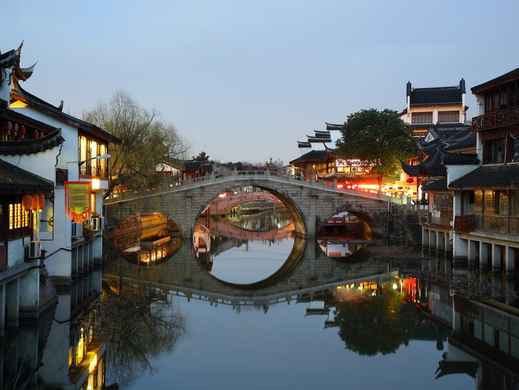


Fuzhou
Asia
/
China
/
Fuzhou
Fuzhou, the capital city of Fujian Province in southeastern China, stands as a captivating blend of ancient heritage and modern development. Nestled along the Min River and blessed with subtropical climate, this historic city boasts over 2,200 years of rich history, particularly exemplified by the well-preserved Three Lanes and Seven Alleys district, one of the largest historic quarters in China featuring traditional Fuzhou architecture from the Ming and Qing dynasties. The city's cultural landscape is further enhanced by the serene West Lake Park, a picturesque recreation area dotted with traditional pavilions and bridges, offering visitors a peaceful escape from urban life.
The spiritual and natural essence of Fuzhou is beautifully captured in its surrounding mountains, with Drum Mountain being home to the famous Yongquan Temple, one of the oldest Buddhist monasteries in China dating back to the Tang Dynasty. History enthusiasts can explore the Lin Zexu Memorial Hall, dedicated to the famous Qing Dynasty scholar-official who played a crucial role in Chinese history, while nature lovers can venture to the Yushan Mountain Scenic Area, offering breathtaking views of the city and hosting the annual Fuzhou International Hot Spring Festival. The city's modern appeal is complemented by its reputation as one of China's "Hot Spring Cities," with numerous natural hot springs attracting wellness-seeking tourists throughout the year.

Travel Tips for Fuzhou
What you need to know before traveling here
Getting Around Fuzhou
A guide to Fuzhou's local transportation
Fuzhou Metro is one of the most efficient ways to travel around the city. Currently operating with 2 lines (Line 1 and Line 2), the metro system connects major areas including Fuzhou Railway Station, Sanfang Qixiang historical district, and various shopping districts. Trains run from approximately 6:30 AM to 10:30 PM daily. Fares range from 2-7 RMB depending on distance. Metro stations have English signage and announcements, making it tourist-friendly. Purchase tickets via automatic machines (accepting both cash and mobile payments) or get a transit card for multiple rides.
Practical Tips for Fuzhou
Things to prepare and best way to visit
The most pleasant months to visit Fuzhou are from September to November and March to May, when temperatures are mild (15-25°C) with less rainfall, making it ideal for exploring outdoor attractions and historical sites. Summer (June-August) can be hot and humid with occasional typhoons, while winter (December-February) is cool but relatively dry.
Fuzhou Changle International Airport serves numerous domestic and international flights, with direct connections to major Asian cities. You can also reach Fuzhou by high-speed rail from other Chinese cities like Shanghai (4.5 hours), Guangzhou (4 hours), and Xiamen (1.5 hours). The city is well-connected to China's extensive transportation network.
San Fang Qi Xiang (Three Lanes and Seven Alleys) historic district, West Lake Park, Drum Mountain (Gu Shan) and the Yongquan Temple, Fuzhou National Forest Park, and Lin Zexu Memorial are essential visits. The historic district particularly showcases traditional Ming and Qing dynasty architecture and local Fuzhou culture.
English is not widely spoken in Fuzhou except in major hotels and tourist attractions. It's recommended to download translation apps like Baidu Translate or Google Translate, carry a pocket dictionary, and save important addresses in Chinese characters. Having your hotel's business card in Chinese is also helpful when communicating with taxi drivers.
Fuzhou's signature dishes include "red wine" chicken (not actually wine but a special marinade), fish balls (yu wan), lychee pork, buddha jumps over the wall soup, and oyster cakes. These can be found in restaurants around Three Lanes and Seven Alleys, Nan Hou Street Food Market, and Yuanxiang Lou Restaurant, which are popular among locals and tourists alike.
See All Practical Tips for Fuzhou

Explore Fuzhou
Create your itinerary with our top picks below

Travel Tips for Fuzhou

Explore Fuzhou






























 Facebook
Facebook Instagram
Instagram TikTok
TikTok Youtube
Youtube Telegram
Telegram
